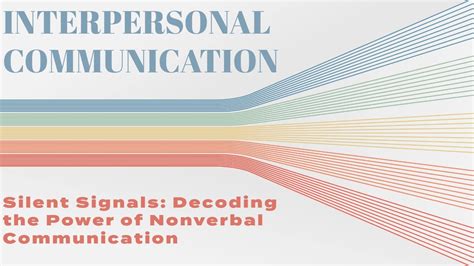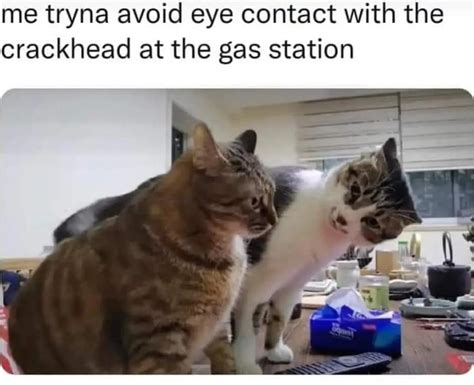
Decoding Dislike: Subtle cues like avoiding eye contact, minimal engagement, and closed-off body language can reveal when someone isn’t receptive, according to experts. Recognizing these nonverbal signals is crucial for navigating social and professional interactions effectively.
Many individuals struggle to discern genuine feelings from polite facades. Experts suggest that while direct confrontation is rare, subtle behavioral cues often betray underlying sentiments of dislike. Recognizing these “silent signals” can empower individuals to adjust their approach, manage expectations, and foster more positive relationships. This ability is particularly valuable in professional environments, where teamwork and collaboration are paramount.
The Tell-Tale Signs of Disinterest
Several key indicators can suggest someone harbors negative feelings, even if they don’t explicitly express them. These signals often manifest in nonverbal communication and patterns of interaction.
-
Eye Contact Avoidance: One of the most telling signs is a consistent lack of eye contact. “They avoid looking at you, or their gaze darts around the room when you’re talking,” indicates a disinterest or discomfort, suggesting a barrier to genuine connection.
-
Minimal Engagement: Engagement levels often plummet when someone dislikes another person. This might involve providing short, terse responses. Experts note, “Short, clipped answers” can be indicative of a desire to end the interaction quickly. Furthermore, a lack of follow-up questions, or a general disinterest in prolonging the conversation, amplifies this signal.
-
Closed-Off Body Language: Body language serves as a window into subconscious feelings. When someone displays closed-off postures, such as crossed arms or a hunched stance, it often signals discomfort or defensiveness. “They might cross their arms, turn their body away from you, or avoid physical touch,” experts explain, highlighting these physical barriers as potential indicators of dislike.
-
Lack of Enthusiasm: Genuine enthusiasm is hard to fake. Individuals who dislike someone often exhibit a noticeable absence of excitement or interest in their presence or contributions. This can manifest as a flat tone of voice, a lack of smiling, or a general disinterest in participating in shared activities.
-
Subtle Disagreements: While not always overt, subtle disagreements or contradictory statements can point to underlying negativity. This might involve nitpicking minor details, expressing dissenting opinions on topics the person favors, or subtly undermining their ideas.
-
Limited Personal Disclosure: When someone dislikes another person, they tend to avoid sharing personal information or details about their life. This creates a sense of distance and prevents the formation of deeper connections.
-
Change in Behavior: If someone’s behavior towards you abruptly changes, it may be a sign of dislike. This could manifest as a sudden shift in communication style, a decrease in interaction frequency, or a general distancing of themselves.
-
Forgetting Details: While occasional forgetfulness is normal, consistently forgetting details about someone, such as their name, their job, or previous conversations, can indicate a lack of interest or regard.
The Psychology Behind Dislike
Understanding the psychological underpinnings of dislike can provide valuable insights into why certain behaviors manifest. Several factors contribute to the formation of negative feelings, including:
-
Cognitive Dissonance: Cognitive dissonance arises when individuals hold conflicting beliefs or values. When someone encounters a person whose views clash with their own, it can create a sense of discomfort or unease, leading to dislike.
-
Social Comparison Theory: Social comparison theory suggests that individuals evaluate themselves by comparing themselves to others. If someone perceives another person as a threat to their self-esteem or social standing, they may develop feelings of resentment or dislike.
-
Prejudice and Bias: Preconceived notions and biases can significantly influence how individuals perceive and interact with others. Negative stereotypes or prejudices can lead to unwarranted dislike, even without any personal interaction.
-
Past Experiences: Past experiences, particularly negative ones, can shape an individual’s perception of others. If someone has had a negative encounter with someone who shares similar characteristics to another person, they may unconsciously transfer those negative feelings.
-
Personality Clashes: Incompatibility in personality traits can lead to friction and dislike. Differences in communication styles, values, or work habits can create misunderstandings and resentment.
-
Competition and Jealousy: Feelings of competition or jealousy can fuel dislike. If someone perceives another person as a rival or a threat to their goals, they may develop negative feelings toward them.
Navigating Social and Professional Interactions
Recognizing the signs of dislike is only the first step. The key is to use this information to navigate social and professional interactions more effectively. Strategies include:
-
Self-Reflection: Before jumping to conclusions, it’s important to examine your own behavior. Are you inadvertently contributing to the negative dynamic? Are you being perceived as arrogant, dismissive, or overly critical?
-
Empathy and Understanding: Try to understand the other person’s perspective. Are they under stress? Are they dealing with personal issues that might be affecting their behavior?
-
Strategic Communication: Adapt your communication style to be more approachable and less confrontational. Use open-ended questions, listen actively, and avoid interrupting.
-
Finding Common Ground: Look for shared interests or values that can help build rapport. Focusing on commonalities can create a sense of connection and reduce animosity.
-
Setting Boundaries: If the negativity persists, it’s important to set boundaries to protect your own well-being. This might involve limiting contact, avoiding sensitive topics, or seeking mediation.
-
Seeking Feedback: Ask trusted colleagues or friends for their perspectives on the dynamic. They may offer valuable insights that you have overlooked.
-
Documenting Interactions: In professional settings, it’s wise to document instances of negative behavior. This can be helpful if you need to escalate the issue to a supervisor or HR representative.
-
Remaining Professional: No matter how challenging the situation, it’s crucial to maintain a professional demeanor. Avoid engaging in gossip, spreading rumors, or retaliating in kind.
-
Focusing on Shared Goals: In work environments, emphasize the importance of teamwork and collaboration. Remind everyone of the shared goals and objectives, and highlight how each person’s contributions are essential.
-
Knowing When to Disengage: In some cases, the best course of action is to simply disengage. If the relationship is irreparably damaged, it may be better to minimize contact and focus on building relationships with others.
The Importance of Emotional Intelligence
The ability to recognize and respond to the signs of dislike is a key component of emotional intelligence. Emotional intelligence encompasses the ability to understand and manage your own emotions, as well as the emotions of others. Individuals with high emotional intelligence are better equipped to:
-
Build Stronger Relationships: By understanding and responding to the emotional needs of others, they can foster deeper connections and build more meaningful relationships.
-
Navigate Difficult Situations: They are better able to handle conflict, manage stress, and resolve interpersonal issues effectively.
-
Lead Effectively: They can inspire and motivate others by understanding their needs and communicating in a way that resonates with them.
-
Achieve Greater Success: They are more likely to succeed in their careers and personal lives because they can build strong relationships, navigate challenges, and adapt to change.
Beyond the Obvious: Advanced Dislike Detection
Beyond the basic signs, several more nuanced cues can reveal hidden dislike. These require a deeper understanding of human behavior and a keen eye for detail:
-
Microexpressions: Microexpressions are fleeting facial expressions that reveal a person’s true emotions, even if they are trying to conceal them. These expressions last only a fraction of a second and can be difficult to detect, but with practice, individuals can learn to recognize them.
-
Contradictory Signals: Sometimes, people send mixed signals, saying one thing while their body language conveys something else. Pay attention to these inconsistencies, as they can reveal underlying feelings of dislike.
-
Exaggerated Politeness: Excessive politeness can sometimes be a sign of insincerity. When someone goes overboard with their compliments or displays an unnatural level of deference, it may be a way of masking their true feelings.
-
Sabotaging Behavior: In extreme cases, people may engage in subtle forms of sabotage, such as withholding information, undermining projects, or spreading rumors. These behaviors are often driven by feelings of resentment or jealousy.
-
Ignoring Contributions: Disregarding someone’s ideas, opinions, or accomplishments can be a passive-aggressive way of expressing dislike. This can be particularly damaging in professional settings, where recognition and validation are important.
-
Condescending Language: Using condescending language or talking down to someone can be a sign of disrespect and dislike. This behavior often stems from feelings of superiority or insecurity.
-
Withholding Help: Refusing to offer assistance or support when someone is struggling can be a subtle way of expressing dislike. This can be particularly hurtful in situations where teamwork and collaboration are essential.
The Impact of Culture and Context
It’s important to remember that cultural norms and contextual factors can influence how people express their emotions. What might be considered a sign of dislike in one culture may be perfectly acceptable in another. For example, in some cultures, direct eye contact is considered disrespectful, while in others, it is seen as a sign of attentiveness. Similarly, the level of physical touch that is considered appropriate varies widely across cultures.
In addition, the context of the interaction can also play a role. Someone who is stressed or tired may exhibit behaviors that could be misinterpreted as signs of dislike. It’s important to consider the circumstances before jumping to conclusions.
The Ethical Considerations
While recognizing the signs of dislike can be helpful, it’s important to avoid making assumptions or judgments based solely on nonverbal cues. People’s behavior can be influenced by a wide range of factors, and it’s unfair to assume that someone dislikes you simply because they avoid eye contact or cross their arms.
It’s also important to avoid using this information to manipulate or exploit others. The goal should be to understand and navigate social interactions more effectively, not to gain an unfair advantage.
Building Resilience and Self-Worth
Ultimately, the best way to cope with dislike is to build resilience and cultivate a strong sense of self-worth. When you are confident in yourself and your abilities, you are less likely to be affected by the negative feelings of others.
Strategies for building resilience include:
-
Practicing Self-Care: Taking care of your physical, emotional, and mental health is essential for building resilience. This might involve getting enough sleep, eating a healthy diet, exercising regularly, and engaging in activities that you enjoy.
-
Developing Strong Relationships: Having a supportive network of friends and family can provide a buffer against stress and adversity.
-
Setting Realistic Goals: Setting achievable goals and celebrating your successes can boost your confidence and self-esteem.
-
Practicing Gratitude: Focusing on the positive aspects of your life can help you to maintain a positive outlook, even in the face of challenges.
-
Learning from Mistakes: Viewing mistakes as opportunities for growth can help you to develop a more resilient mindset.
Conclusion
Decoding the signs of dislike is a valuable skill that can enhance social and professional interactions. By understanding the subtle cues that betray underlying sentiments, individuals can navigate relationships more effectively, manage expectations, and foster more positive connections. However, it’s essential to approach this knowledge with caution, avoiding hasty judgments and prioritizing empathy and understanding. Building emotional intelligence, practicing self-reflection, and cultivating resilience are essential components in navigating the complexities of human relationships. Remember that everyone has their own unique perspective and experiences, and that understanding these differences can lead to greater empathy and compassion. By striving to build bridges instead of walls, we can create more positive and fulfilling relationships in all areas of our lives. Ignoring or dismissing perceived slights, however tempting, is often not the best approach. Proactive, thoughtful responses, tailored to the situation, are key to navigating these complex social dynamics.
Frequently Asked Questions (FAQ)
-
What is the most reliable sign that someone dislikes me?
While no single sign is foolproof, a combination of factors, such as consistent eye contact avoidance, minimal engagement in conversations, closed-off body language (e.g., crossed arms), and a lack of enthusiasm when you’re around, can strongly suggest dislike. It’s important to consider these signs in context and look for a pattern of negative behavior rather than relying on a single instance. Keep in mind that cultural differences and individual personalities can also influence behavior. According to experts, “They avoid looking at you, or their gaze darts around the room when you’re talking,” and “Short, clipped answers,” are common indicators of disinterest.
-
Is it possible to misinterpret the signs of dislike?
Yes, it is definitely possible to misinterpret the signs of dislike. Factors such as stress, fatigue, cultural differences, and personal issues can all influence someone’s behavior. For example, someone who is shy might avoid eye contact, or someone who is feeling unwell might be less enthusiastic than usual. Before jumping to conclusions, it’s important to consider the context and to avoid making assumptions based solely on nonverbal cues. Always attempt to gather more information and consider alternative explanations.
-
What should I do if I think someone dislikes me at work?
If you suspect someone dislikes you at work, the first step is to self-reflect and consider whether your own behavior might be contributing to the negative dynamic. Try to identify any specific interactions or behaviors that might be causing friction. If possible, try to have a calm and respectful conversation with the person to address the issue directly. If direct communication isn’t feasible or productive, focus on maintaining professionalism, setting boundaries, and documenting any instances of negative behavior. If the situation escalates or affects your work performance, consider seeking guidance from your supervisor or HR department.
-
How can I improve my ability to recognize the signs of dislike?
Improving your ability to recognize the signs of dislike requires developing your emotional intelligence and honing your observational skills. Pay attention to nonverbal cues, such as body language, facial expressions, and tone of voice. Practice active listening and try to understand the other person’s perspective. Read books and articles on nonverbal communication and psychology. You can also ask trusted friends or colleagues for their feedback on your ability to read people’s emotions. Remember that practice and experience are key to developing this skill.
-
Is it always necessary to address the issue if I sense someone dislikes me?
No, it is not always necessary to address the issue directly if you sense someone dislikes you. The decision to address the issue depends on several factors, including the nature of your relationship with the person, the severity of the negative behavior, and your own comfort level. In some cases, it may be best to simply disengage and minimize contact. In other cases, a direct conversation may be necessary to clear the air and resolve any misunderstandings. Consider the potential consequences of addressing the issue and weigh the pros and cons before taking action. Your well-being should always be your top priority.
-
How can I handle situations where someone subtly sabotages my work because they dislike me?
Subtle sabotage can be insidious and difficult to address. Begin by meticulously documenting all instances of sabotage, including dates, times, specific actions, and any witnesses. This documentation is crucial if you need to escalate the issue. Attempt to address the behavior directly with the person involved, focusing on the impact of their actions on your work and the team’s goals, rather than accusing them of dislike. If direct communication fails or is not appropriate, report the behavior to your supervisor or HR department, presenting your documented evidence. Focus on maintaining professionalism and continuing to deliver high-quality work, as this will demonstrate your competence and resilience.
- What if the person who dislikes me is my boss? How should I navigate that situation?
Having a boss who dislikes you can be particularly challenging. First, ensure your performance is impeccable and consistently exceeds expectations. Document all your accomplishments and contributions to the team. Schedule regular one-on-one meetings with your boss to discuss your performance, seek feedback, and understand their expectations. If the dislike manifests as unfair treatment or discrimination, consult with HR to understand your rights and options. Consider transferring to another department or seeking employment elsewhere if the situation becomes unbearable and impacts your well-being. Prioritize maintaining your professionalism and protecting yourself from any form of harassment or discrimination.
- Are there specific cultural considerations when interpreting signs of dislike?
Yes, cultural differences significantly impact how emotions are expressed and interpreted. Direct eye contact, for example, is considered a sign of attentiveness and respect in many Western cultures, but can be seen as aggressive or disrespectful in some Asian and African cultures. Similarly, physical touch and displays of emotion vary widely across cultures. Being aware of these differences is crucial to avoid misinterpreting someone’s behavior as a sign of dislike when it may simply be a cultural norm. Research and educate yourself about the cultural norms of the people you interact with, and avoid making assumptions based on your own cultural background.
- How can I build resilience to cope with knowing someone dislikes me?
Building resilience is essential for coping with the emotional impact of being disliked. Practice self-care by prioritizing your physical and mental well-being. Engage in activities you enjoy, spend time with supportive friends and family, and seek therapy or counseling if needed. Focus on your strengths and accomplishments, and remind yourself of your value and worth. Develop a strong support network of people who appreciate and value you. Practice mindfulness and gratitude to cultivate a positive outlook. Remember that you cannot control other people’s feelings, but you can control your own reactions and responses.
- What if I’m projecting my own insecurities and misinterpreting neutral behavior as dislike?
It’s important to consider the possibility that your own insecurities may be influencing your perception of others’ behavior. Reflect on your past experiences and identify any patterns of insecurity or self-doubt. Challenge your negative thoughts and replace them with more rational and positive ones. Practice self-compassion and remind yourself that everyone experiences feelings of insecurity from time to time. Seek feedback from trusted friends or colleagues to get an objective perspective on your interactions. If your insecurities are significantly impacting your relationships, consider seeking therapy or counseling to address the underlying issues.









